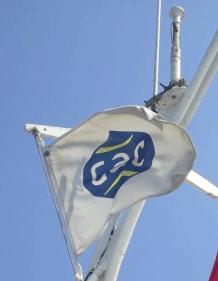Orange Is The New
Benefit
 After
the welter of upbeat air cargo assessments and stats that have been pouring
forth from Asia in recent months, Peter Orange, Regional Manager, Freight
Sales, for the Asia Pacific and Indian Subcontinent at leading logistics
player GAC, is rather more sanguine on the forward outlook for the rest
of this year. After
the welter of upbeat air cargo assessments and stats that have been pouring
forth from Asia in recent months, Peter Orange, Regional Manager, Freight
Sales, for the Asia Pacific and Indian Subcontinent at leading logistics
player GAC, is rather more sanguine on the forward outlook for the rest
of this year.
But unlike many of his peers who see threats
to demand from cloud and 3D technologies, he believes advances in technology
can be of benefit to the air freight sector and a driver of demand.
Orange said that so far in 2014, demand
out of Asia had improved but insisted many markets still remained soft,
in keeping with the start of the year when there was no spike in uplift
volumes prior to Chinese New Year.
“As we are now heading into a holiday
period in China we are not seeing any significant rises in demand,”
he said. “In fact, we are expecting the cancellation of freighter
services to and from China and Hong Kong.
“We see the peak season as being soft
this year with perhaps some minor spikes, but it will not be the same
as the pre-2009 days. Companies are becoming more conscious of the costs
of their supply chains and have switched to better forecasting and planning.
“This is true with a number of our
clients and hence, we are seeing a drop in both unplanned and planned
airfreight movements particularly to North America this year.”
GAC has seen some changes in origin sourcing
and this has been reflected in carrier strategy. However,
Orange said the more traditional airfreight origins and hubs like Hong
Kong remained strong players.
“In recent times, we have witnessed
the rise and fall of a number of start-up and joint venture cargo airlines,”
he added.
“Demand from Taiwan has definitely
shifted, with the movement of manufacturing and supply to Mainland China.”
 Orange
was also unusually downbeat on inbound traffic demand to China, a trade
most of those in the industry contacted by FlyingTypers have
been positive about this year. “Within the manufacturing sector,
our customers are turning to more local sourcing of both raw materials
and components in China,” he said. “Hence, we expect inbound
demand to reduce in the medium to longer term.” Orange
was also unusually downbeat on inbound traffic demand to China, a trade
most of those in the industry contacted by FlyingTypers have
been positive about this year. “Within the manufacturing sector,
our customers are turning to more local sourcing of both raw materials
and components in China,” he said. “Hence, we expect inbound
demand to reduce in the medium to longer term.”
The near- and re-shoring strategies of some
OEMs was also reducing demand out of China and other parts of Asia as
manufacturers shifted the point of manufacturing closer to customers.
“Although this is driven in part by
environmental demands, another significant factor is the instability in
the supply chain resulting from costs, which include fuel and security
surcharges, cancellation of services and in the case of ocean freight,
‘slow steaming’ to save fuel costs,” he explained.
“Even though ‘slow steaming’
adds to transit times by up to 20-25% for shipments from Asia to Europe,
these commodities cannot tolerate the sustained cost of airfreight services.
“Although the demand out of China
is expected to soften slightly in the medium term, it will continue to
be the envy of many other countries.”
Orange also went against the industry flow
when asked about the ‘miniaturization’ of cargo, and the use
of Cloud IT systems and 3D Technology, all of which he claimed were not
having a bearish impact on air freight demand out of Asia.
“The demand for new gadgets is growing
at an exponential rate, and when new gadgets and smart phones are released,
the volumes that are being shipped globally continues to increase,”
he argued.
“There is also an increasing demand
in newer and developing markets for high-end luxury items and other consumables,
and this will continue to drive the demand for air cargo services.
“High-end food and consumables such
as meats, dairy products and wine and spirits are of high value and have
to be shipped via air freight.
“We are of the view that technology
within the industry is in ‘catch up mode’, as forwarders and
airlines try to integrate their systems to provide greater visibility
to the customers.”
SkyKing
|






